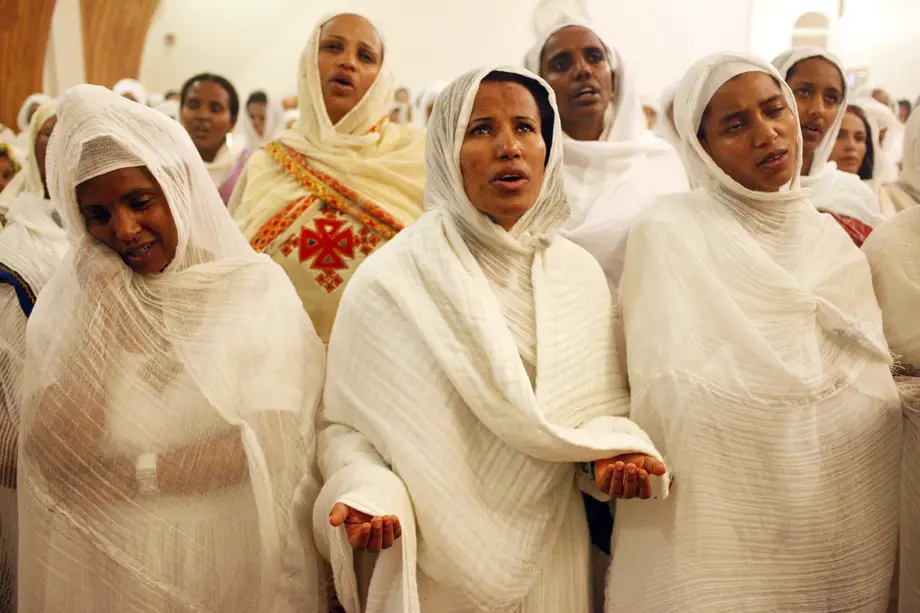Ethiopian New Year (Enqutatash) is one of the pre-eminently celebrated festivals that most tourist are interested in. Celebrated on Meskerem 1st of the Ethiopian calendar or September 11th (or 12th during a leap year) of the Gregorian calendar, it is a public holiday among people of all religions and almost all cultures throughout the country. It marks the end of the three months-long, dark heavy rainy season and the beginning of a new sunny and bright season. The name “Enkutatash” can be translated as a “Gift of Jewels” and alludes to a centuries-old tale of Queen of Sheba of Ethiopia who visited to King Solomon of Israel. She sent a range of gifts for the king and, upon her return home, was welcomed with a supply of “enku” (jewels) for her treasury. On the day of Enkutatash most household members gather to enjoy a traditional meal and celebrate by offering gifts to children.



Meskel (Finding of the True Cross), is a Christian holiday and the celebration of the finding of remnants of the actual cross on which Jesus was crucified. The celebration is said to be started in 326 AD. The word “meskel” in Amharic and Tigrigna means “cross”. The finding of the True Cross is celebrated in Ethiopia on every Meskerem 17 (September 27). It starts on the eve (September 26) with large preparation of bonfires called demera, topped with a cross and decorated with meskel flowers. The bonfire (demera) preparations are blessed and burned while revelers sing and dance around the fire. In northern Ethiopia (some parts of Amhara region and in the whole Tigray region), the Demera celebration happens on the actual Meskel day. On the eve of Meskel, Ethiopian Orthodox Tewahedo Church deacons, priests, choir and worshipers from different churches and diocese make an elaborate procession to the demera place singing about the power of the cross and its findings.
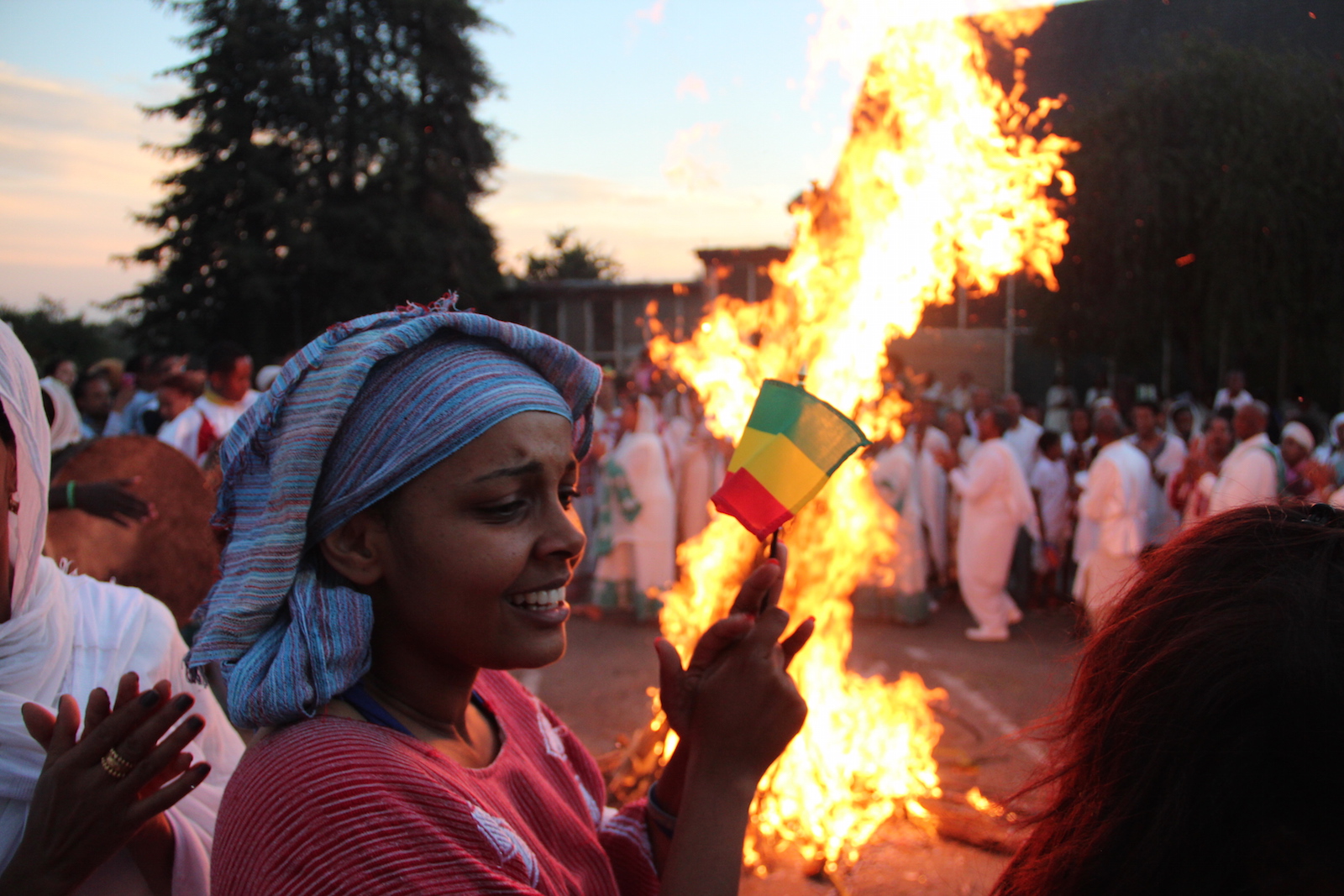


In addition to the festivities of the Ethiopian Orthodox Church, Meskel is extensively and colorfully celebrated in different parts of southern Ethiopia. The Gamo people are among the ethnic groups that celebrate the holiday in a more elaborate way. Unlike the Meskel celebration of the Orthodox Church, the festivities of Gamo Meskel locally known as Masqala cover several days. The Gamo people living in different parts of Ethiopia move back to their home village to celebrate Masqalla together with their families and relatives.

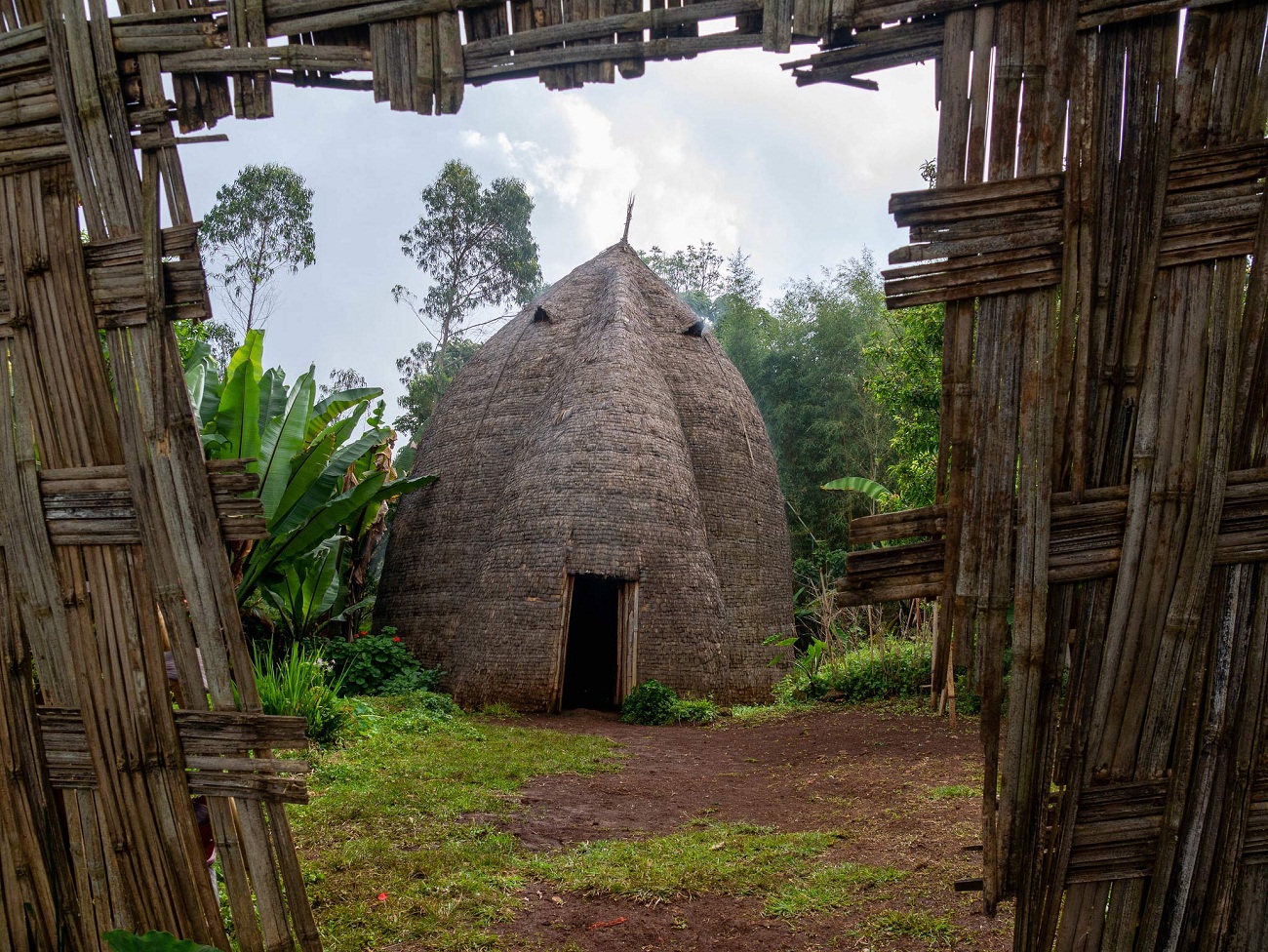

Located 483 kilometers north of Addis Ababa in South Wollo zone of Amhara Region, Gishen Mariam Church is situated in a beautiful landscape. Gishen Debre Kerbe, also known as Gishen Maryam, is one of the most ancient and sacred monasteries in Ethiopia. It is established at an elevation of 3,019m (9,905 ft) above sea level in Ambasel woreda some 80km (50mi) northwest of Dessie. The cross-shaped Amba (“flat-topped mount”) Gishen is home to four churches: Gishen Maryma, Kidus Gabriel, Kidus Mikael and Egziabher Ab. The story started in the 15th century when Emperor Zara Yaqob (1434–1468) brought a piece of the “True Cross” on which Jesus Christ was crucified to Gishen Amba and buried it under the church of Egziabher Ab, where it remains to this day.



Hidar Tsion is the Celebration of Saint Mary in Aksum in Hidar 21 (November 30). The celebration is related to a fascinating story of the Ark of the Covenant believed to be currently held in the Church of Saint Mary of Zion. This festival is attended by tens of thousands of people from all over the country and the world and stay during the days of November 27-31 every year, making it one of the most joyous annual pilgrimages in Aksum, which is considered as the “sacred city of the Ethiopians”. During these days there is a marvelous atmosphere in the town of Aksum and great spectacles for the visitors when they attend and obverse the Processions of the clergy and the deacons using drum, with dancing and chanting. The Ark itself has symbolic meanings to the country’s ancient civilization and Christianity.
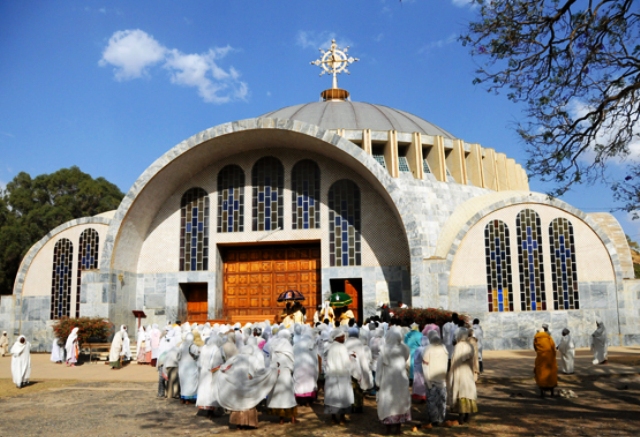
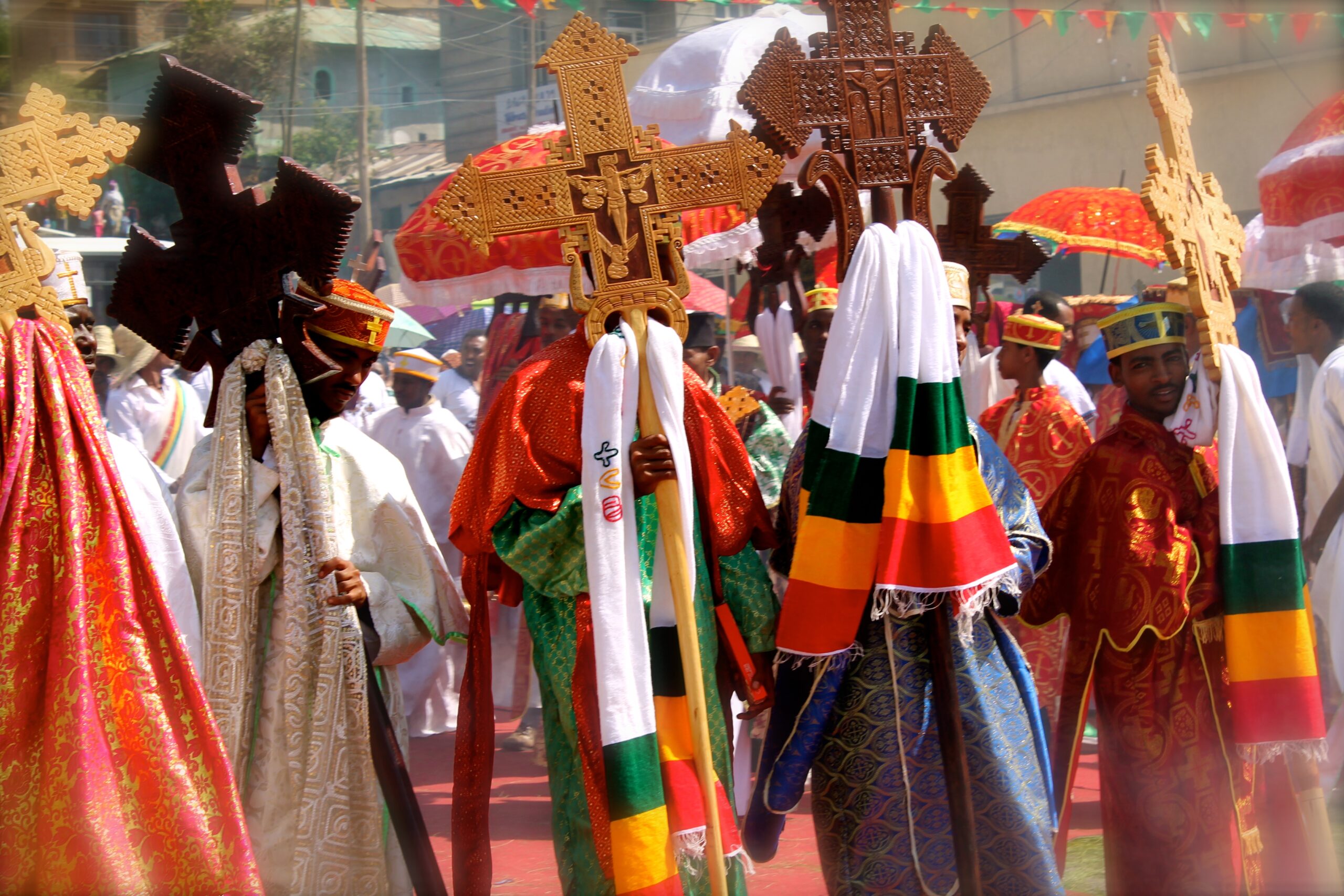
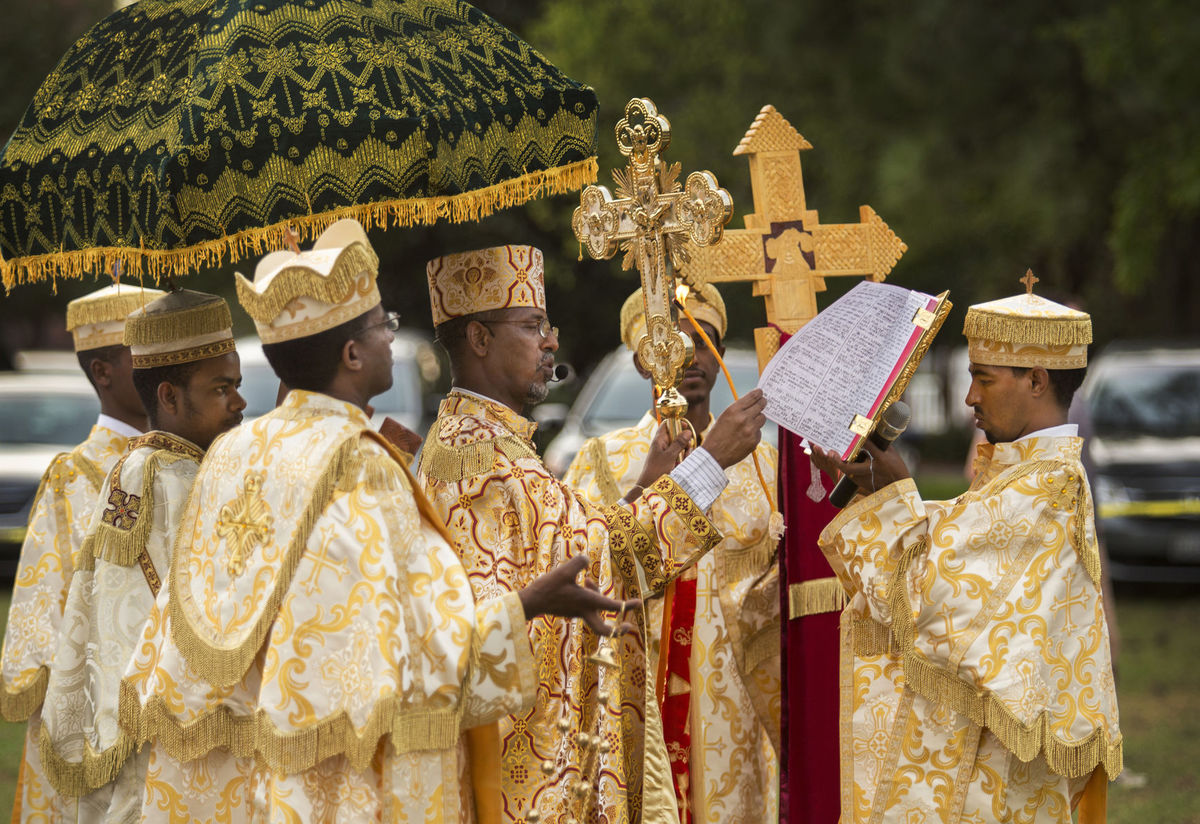
Ethiopian Christmas celebrated on January 7 is locally called Genna, which comes from the Amharic word Gennana, meaning “imminent” to show the coming of the Lord and the freeing of humankind from sin. It is also known as Lidet (Birth), to indicate the birth of Jesus Christ. The main ceremonial activities of the holiday center around local Ethiopian Orthodox churches (though Protestants and Catholics also celebrate), which hold late-night services on the eve of Christmas lasting well past midnight. Traditional liturgical singing marks these services, as does chanting performed by priests and deacons wearing colorful robes with gold and silver accents. Many people travel by foot from home to Church to take part in the ceremony. Hundreds of thousands of followers walk toward Churches dressed as a sea of brilliant white cotton is a common sight throughout the country.
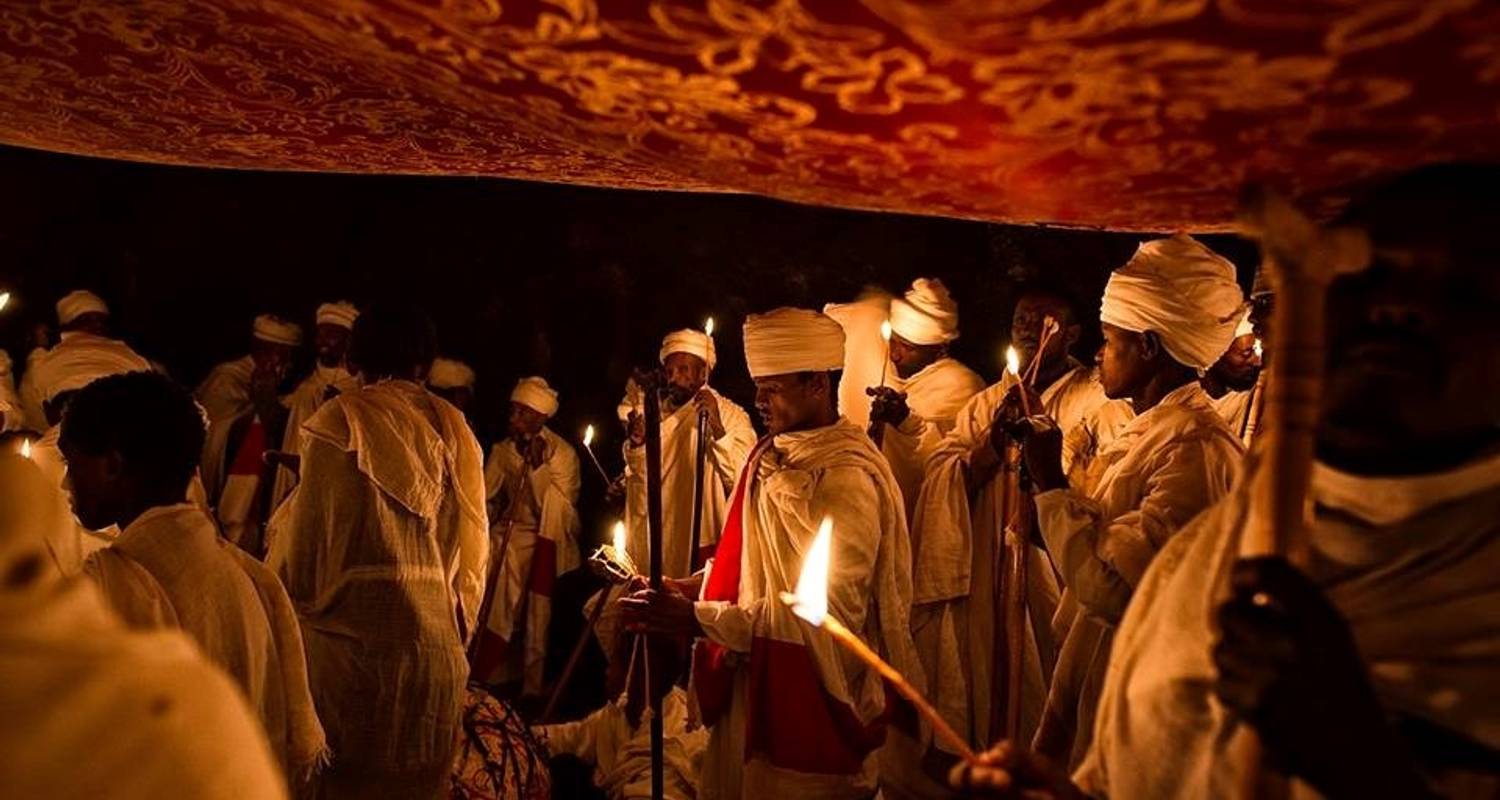
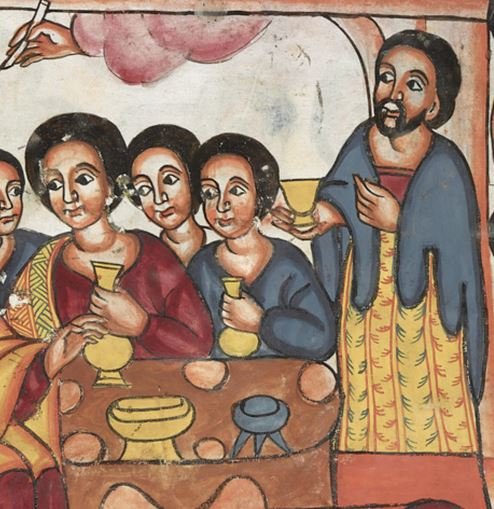

Timket (Ethiopian Epiphany) is observed every year on Tirr 11 (January 19) to commemorate the baptizing of Jesus Christ by John the Baptist in the River Jordan. In Ethiopia it is one of the biggest and most fascinating annual holidays of the year. Usually timket is a three-day event: Ketera on the eve of Timket, the main festival of Timket and kana zegelila on January 20. This is accompanied by a special dance by the priests with their prayer sticks and sistera, the beating of drums, ringing of bells, and blowing of trumpets. After the prayer, a senior priest uses a golden processional cross to bless the water and extinguishes a burning consecrated candle in the water. Then, he sprinkles the water on the assembled congregation in commemoration of Christ’s baptism. ‘Ketera’ is taken from the Amharic word, ‘Ketere’ to mean to make a barrier as it is common to construct a small barrier to reserve water in some places where there is no passing river for the celebration of Timket. In the afternoon of Ketera, the Tabots (replicas of the Arc of the Covenant) from each Church is taken to a selected place, where there is a river/water body. Therefore it provides many social and cultural benefits to humanity and the people celebrating it, in 2019 UNESCO recognized timket and registered it as one of the world’s Intangible Cultural Heritage.
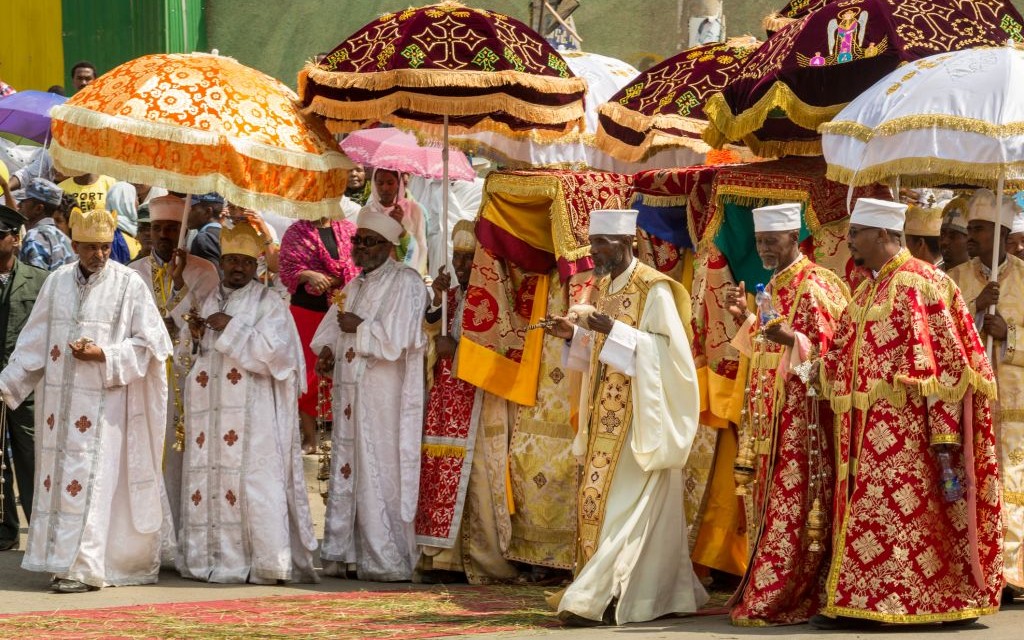
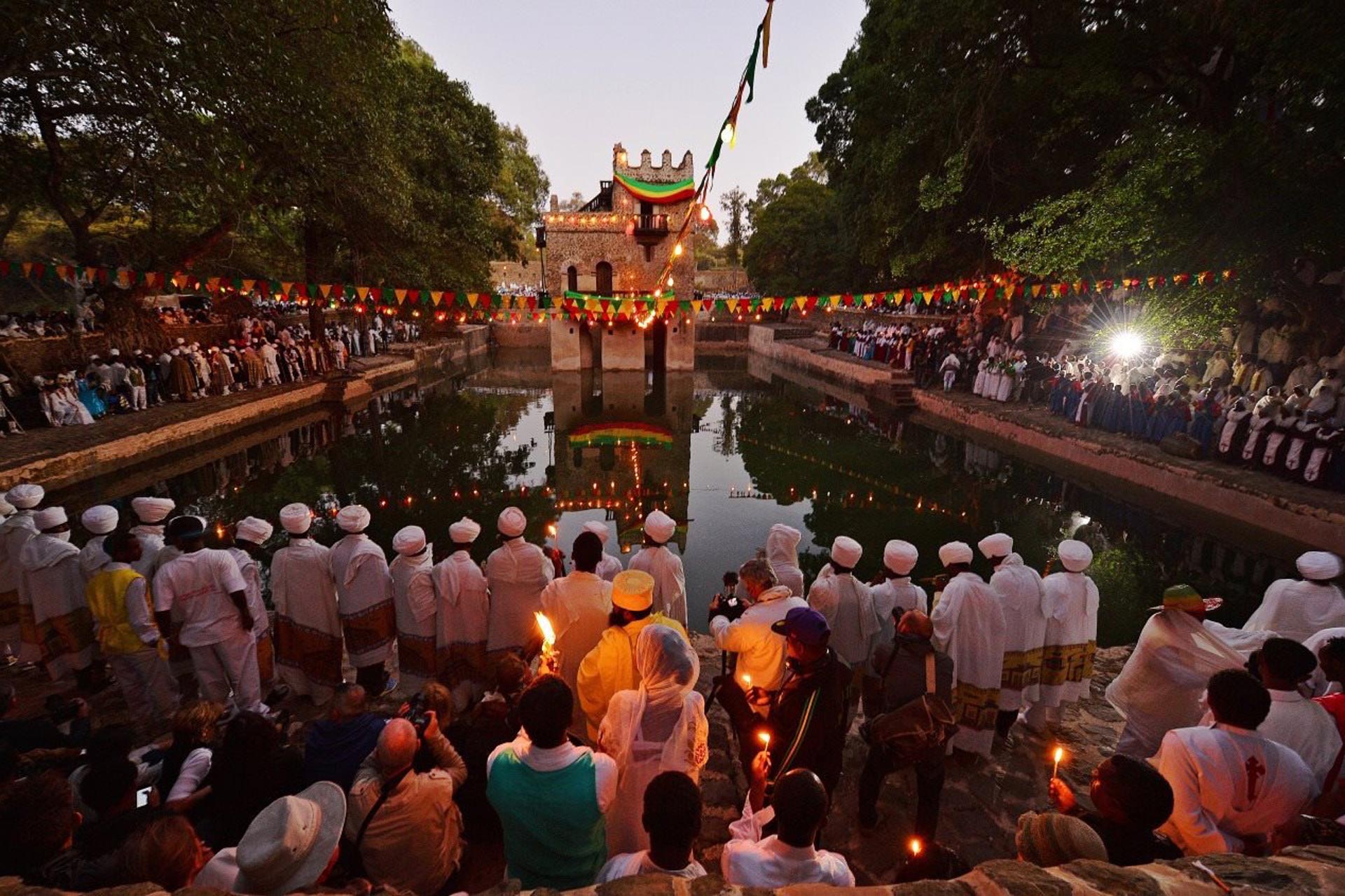
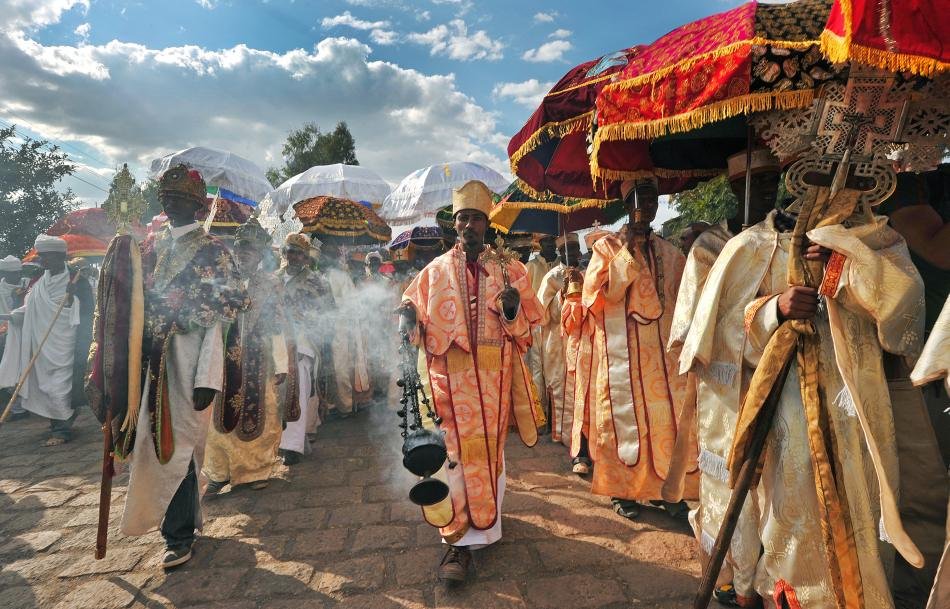
Easter in Ethiopia is one of the most colorful religious festivals celebrated often in the month of April or early May. The Ethiopian Easter festival is called Fassika. This festival celebrates the death and resurrection of Jesus, his victory over death, and is one of the main celebrations of Christianity. Fasika is celebrated after the major fasting season known as Hudade or AbyeTsom. The celebration starts on Palm Sunday locally called Hosaina which happens the Sunday before Easter. This day marks the beginning of Holy Week and celebrates the story of Jesus riding into Jerusalem on a donkey. On this day Ethiopians wear headbands of palm leaves to remind them of the palm leaves that were laid in Jesus’ path. This is followed by another event, which is the Last Supper on Thursday locally called TseloteHamus. The next and the other major holiday and event is the celebration of Good Friday, which is locally called siklet– the crucifyof Jesus Christ. Finally, on Sunday is Fasika. On the eve of Fasika, which is Saturday.
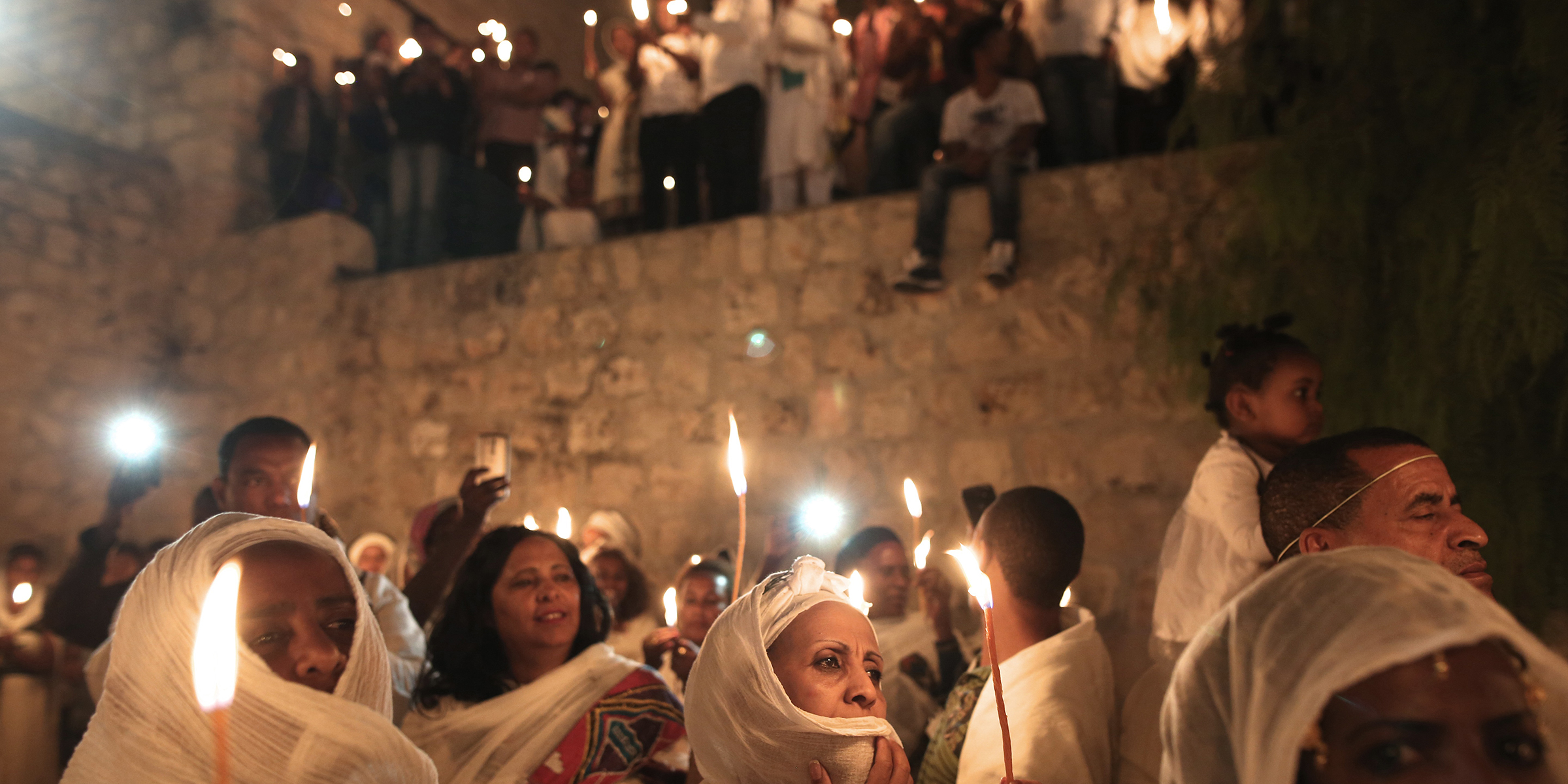


Kulubi is a town in eastern Ethiopia located in East Hararghe Zone of Oromia Region, about 68 kilometers from Dire Dawa. Kulubi is known for its ancient church, dedicated to St. Gabriel, which is the site of massive pilgrimages twice a year (on 26 July and 28 December) attended by tens of thousands of mainly Orthodox pilgrims, while there are also followers of other religions. The Church was built in 1880 by Ras Mekonnen the then governor of Harar and it was re-built in 1962 by Ras Teferi Mekonnen, later Emperor Haileselassie I. Almost every Christian in Ethiopia has a patron Saint and one of the most popular is Gabriel. The 28th of December and 26th of July are dedicated to the annual and colorful celebration of this Saint at Kulubi.


